The Next Cultural Powerhouse: Dior’s Hidden Mandate for Jonathan Anderson
Jonathan Anderson’s appointment isn’t just news, it’s narrative. And narratives are what Dior was born to write. Oh and Congratulations Mr. Anderson!
In an industry built on myth, moments like these don’t come often. With the announcement that Jonathan Anderson will take over as Artistic Director for both the Men’s and Women’s lines at Dior, the Maison enters uncharted territory, uniting its creative vision under one mind, one hand, one voice. Aside from Monsieur Dior himself, no one has held this dual role. That alone makes this a generational moment. But look closer, and something even more important reveals itself.
Anderson arrives not only with the acclaim of transforming Loewe into the thinking person’s fashion house, but with something rarer still: an auteur’s eye. His design language has always blurred boundaries - between craft and concept, fashion and film, art and intimacy. He stages collections like they’re screenplays. He builds atmosphere like a director of photography. He doesn’t just dress a body, he casts a character.
Anderson’s recent signing with United Talent Agency (UTA) makes it official: he is not merely a designer. He is a storyteller. A multi-disciplinary auteur prepared to navigate the new frontiers of culture, where luxury is no longer defined by products alone, but its stories, its narrative capital, and cultural significance. Signing with UTA wasn’t just a fashion move. It was a cinematic one.
But let’s be honest. This isn’t just a coronation, it’s a crucible.
Luxury’s authority as a storyteller, as an engine of cultural desire, is under siege. The very idea of “desirability” is being rewritten in real time by Big Tech platforms and their algorithms. The recent financial results in the luxury industry speak for themselves: even giants like LVMH, Kering, and Chanel are signaling deceleration. Desirability can no longer be bought with louder campaigns or seasonal spectacle. Something deeper must be built….
In this context, Anderson’s arrival is more than symbolic, it’s strategic.
As Bernard Arnault himself declared at the BoF:
“Jonathan Anderson is one of the greatest creative talents of his generation. His incomparable artistic signature will be a crucial asset in writing the next chapter of the history of the House of Dior.”
This article is not just a congratulations. It is a proposition.
A proposition that Dior, under Anderson’s guidance, has the rare opportunity to become the cultural powerhouse of the next century. Not just a fashion leader, but a sovereign voice in how culture, beauty, meaning, and identity will be shaped in the decades to come.
Let’s explore how.
Dior’s Origins: A Brand Built on Cultural Impact & Narrative Power
Long before Dior became a global empire, it was a cultural earthquake.

When Christian Dior unveiled the New Look in 1947, it wasn’t just a new silhouette. It was a rebuke to the austerity of war, a reawakening of elegance, a redefinition of what it meant to be a woman. The cinched waist, the full skirt, the theatrical flair - it wasn’t subtle. It was symbolic. It turned the runway into a mirror, reflecting not just hemlines, but stories & dreams.
Monsieur Dior didn’t follow the trend. He rewrote it.
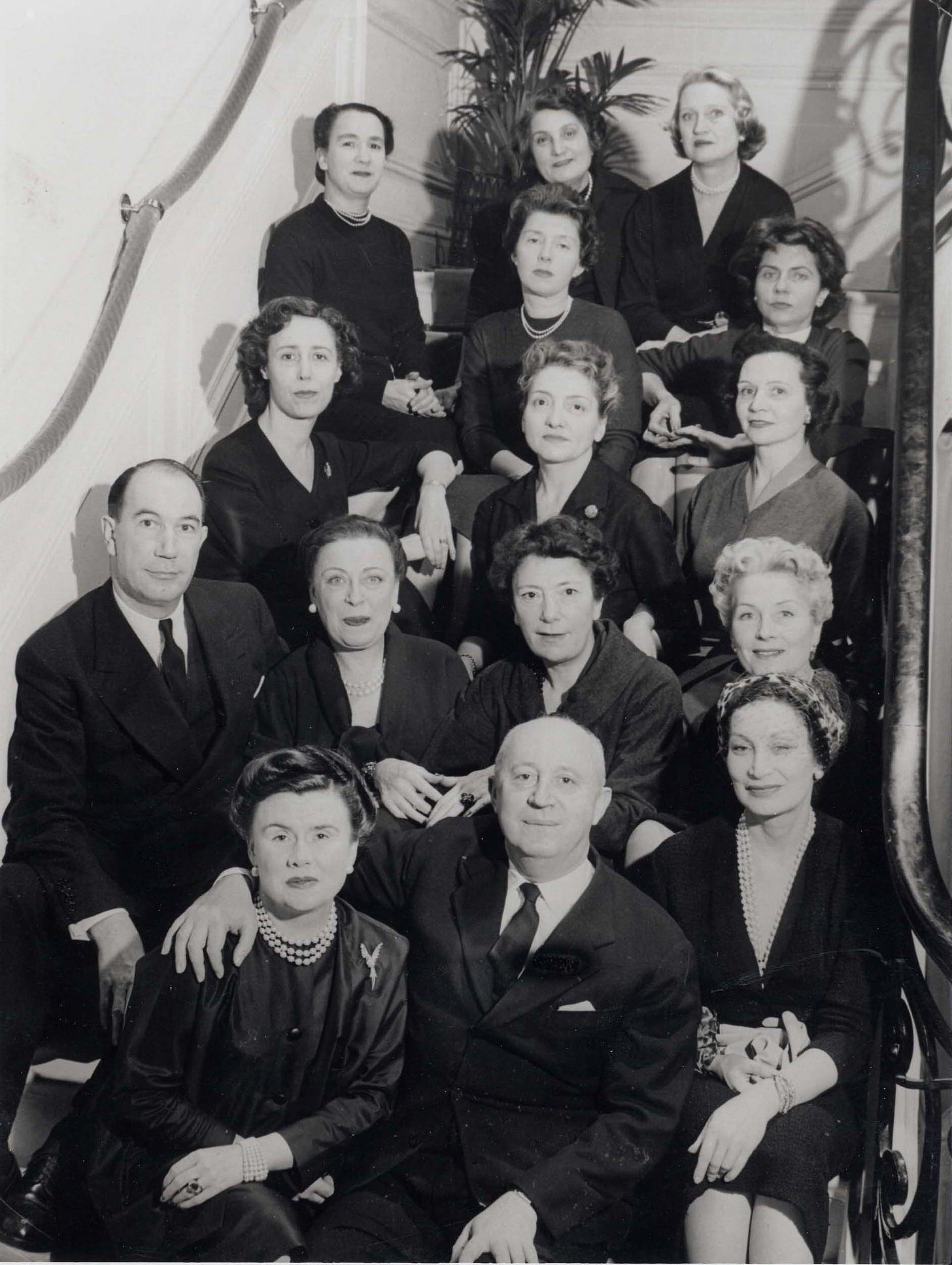
He understood something today’s luxury world is only beginning to rediscover: that fashion is most powerful when it’s more than fashion. When it channels emotion, when it stages ideals, when it builds worlds of desire. His salons weren’t showrooms. They were stages. His models weren’t mannequins. They were muses, cast into stories of French femininity, romance, and reinvention. From the beginning, Dior was more than a Maison. It was a medium. And every collection was a new broadcast.
His early runway presentations were theatrical and near-cinematic, crafted with the precision of a director’s vision. The lighting, the pacing, the music, the narrative arc of a show: this was not retail. It was cultural storytelling before the term existed. Dior didn’t just design garments. He authored aspiration. He made women dream, not just about dresses, but about what they meant.

When a young Bernard Arnault first visited New York in 1971, he asked a taxi driver if he knew the name of the French president.
“No, the only Frenchman I know is Christian Dior” the driver replied.
That says everything. Dior wasn’t just a designer, he was France’s most famous export. His name eclipsed presidents, crossed oceans, and defined an entire era of elegance and culture. It’s no wonder that in 1984, Monsieur Arnault returned to Paris, borrowed $45 million from Lazard Frères, added $15 million of family money, and bought Dior. That single move, driven by instinct and memory, became the founding act of what we now know as LVMH. Dior, in many ways, wasn’t just Arnault’s first acquisition. It was the origin of the luxury empire he would go on to build. His first act of cultural foresight.
Watch Monsieur Arnault’s 2014 interview, recounting the taxi ride that etched Dior into his memory, not through marketing, but through meaning. A reminder that desirability isn’t shouted, it’s remembered:
Although Mr. Dior has left us in 1957 😔, his talent and genius now resides somewhere else, as Delphine Arnault, CEO of Dior recently noted in an exclusive BoF interview,
“In many ways, Jonathan Anderson shares similarities with Monsieur Dior, who loved art — he was a gallerist. Jonathan is also passionate about art and has done many collaborations with artists throughout his career. He also loves gardening and flowers, like Monsieur Dior. And he’s quite superstitious too...”
In other words: Dior was born as a cultural institution. And Anderson, perhaps more than anyone of his generation, has the vocabulary and the imagination to speak in that original voice.
This isn’t reinvention. It’s return. Exactly what’s needed in these times.
And the mandate ahead is not to update Dior. It’s to author the next cultural era in its name.
Today’ Shift: From Collection Drops to Cultural Sovereignty
The luxury fashion business is not broken. It’s saturated.
Collections drop faster than they can be digested. Big Tech algorithms push content at industrial speed. Runway moments become viral stories, stripped of context and drowned in digital noise. We’ve built a stage so loud that it’s nearly impossible to hear the story.
And yet, something essential is missing. Desirability is fading. Aura is evaporating. Visibility is no longer the problem. If anything, there’s too much of it.
This is the consequence of luxury’s Faustian Bargain: surrendering authorship to Big Tech platforms (article link just below) built for scale, not soul. Spaces optimized for mass attention, not meticulous intention. In chasing virality, luxury brands traded narrative for noise. Scarcity flattened into ubiquity. Craftsmanship diluted into content.
Luxury Maisons such as Dior, once culture-shaping, now fight for a swipe between a meme and a political rant.
But it doesn’t have to be this way.
Hermès proves that. In refusing to chase the algorithm, Hermès preserved its sovereignty. It doesn’t play the content game and yet it commands desire, loyalty, and now commands the highest market capitalization in luxury. Not through reach, but through memory. Read my article about this below:
The lesson is clear: memory scales. Aura compounds. Intention outlasts impression.
The question facing Dior and Jonathan Anderson is not “How does Dior perform on a campaign or launch?” It is far more consequential:
“How does Dior shape the next century of culture?”
Because Dior doesn’t need more content. It needs cultural architecture.
That means:
Serialized storytelling that transforms product drops into narrative chapters.
Seasonal cinema such short films, visual essays, immersive trailers that draw the public deeper into Dior’s evolving myth.
Maison-owned editorial verticals, where craftsmanship isn’t just worn, but read, heard, and watched. Content with the same integrity as a hand-sewn hem.
A curated cultural calendar, staging ritualized moments of revelation. Not just launches, but liturgies designed to build anticipation, tradition, and emotional memory.
Anderson is not just being asked to design collections. He’s being handed the keys to a platform of global culture and meaning. The real task? To stop chasing attention and start building Christian Dior’s aura and desirability again.
A New Role for Creative Directors: From Designers to Cultural Architects
The job title hasn’t changed. But the job has.
In the past, Artistic Directors were tasked with designing collections. Today, they’re expected to design culture. They shape not just garments, but how we see ourselves, how desire, identity, and storytelling manifest in the world.
The runway is no longer their only stage. The canvas now spans cinema, literature, music, performance, and the digital universe. In this new terrain, Creative Directors are not merely tastemakers. They are cultural architects.
Jonathan Anderson already embodies this evolution.
His work has always had the feel of cinema: mythological in mood, sensual in silhouette, and intellectually rigorous in construction. But beyond metaphor, Anderson has become an actual player in the world of film, crafting costumes, narrative arcs, and visual mythologies that extend far beyond fashion.
His recent collaborations with director Luca Guadagnino on Challengers and Queer are more than costuming, they are storytelling in fabric.
“There is something quite surrealistic” Anderson remarked, “when the person is no longer themselves. They are someone else in front of you.”
His designs don’t merely dress the character. They summon them.
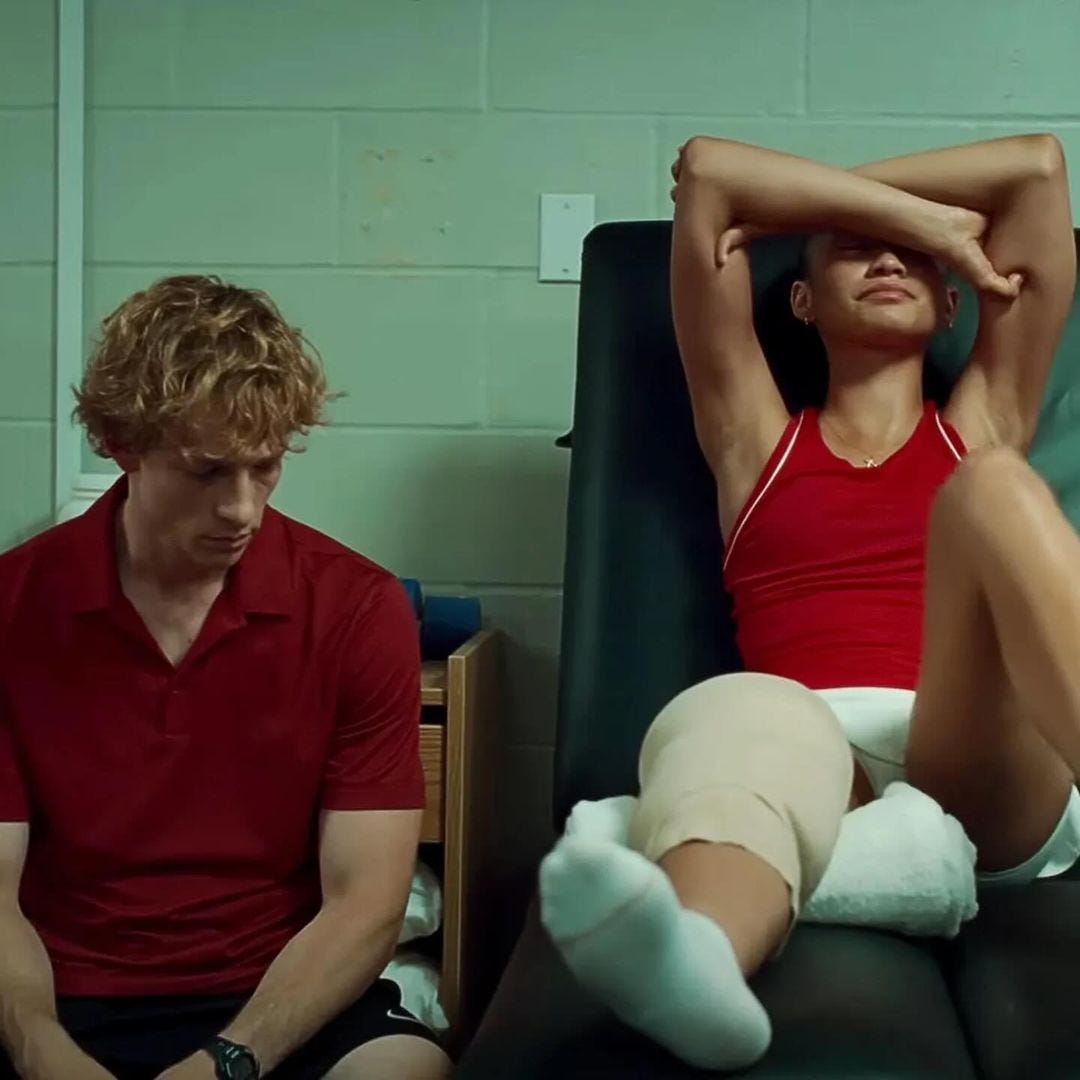
That instinct, part illusionist, part historian, part provocateur is exactly what Dior needs now. Anderson brings the discipline of a couturier, the poetry of a filmmaker, and the bravery of an auteur. Anderson’s signing with UTA last year wasn’t just a career move:
It was a declaration: that luxury fashion, film, and narrative design are now intertwined and (we hope) that he intends to play across the entire field.
And Anderson is not alone.
Pharrell Williams, Artistic Director of Louis Vuitton Men’s, is his creative counterpart, his echo across disciplines. Pharrell isn’t just a producer of music; he’s scored Oscar-nominated films, voiced global animation franchises, and composed soundtracks that shaped an entire generation’s emotional landscape.
At the 2025 Met Gala, which he co-chaired with Anna Wintour, under the theme of Black dandyism, Pharrell didn’t just arrive in style, he arrived with a statement:
“It’s not just about dressing well; it’s about using style as a form of self-expression and freedom.”
That’s the same spirit Dior once stood for and the same spirit Anderson now has the opportunity to recapture. Together, Anderson and Pharrell could form the creative axis of a new LVMH era: one that doesn’t just launch collections, but launches stories: cinematic, cultural, immersive.
You could call them, jokingly but accurately, The Cultural Cabinet of Luxury. Two artists, two Maisons, one mission: to turn luxury into the narrative engine of global imagination, culture and desire.
Bernard Arnault himself seemed to anticipate this moment when, at the April 2025 LVMH General Assembly, he reminded his shareholders:
“The extraordinary power of attraction of our métiers must remain our long-term compass.”
That compass now lies in the hands of his most visionary Artistic Directors. Their role is no longer confined to silhouette or season. It is to ensure that luxury’s “power of attraction” extends across screen, stage, culture, and memory.
That is Anderson’s true mandate. And Dior’s greatest opportunity.
It’s time for Dior, LVMH and its Maisons to reclaim their cultural sovereignty
“As Einstein said: you can’t solve a problem with the same solutions or thinking.” - Bernard Arnault, LVMH Annual Meeting, April 2025
Eureka! the new category isn’t content. It’s cultural sovereignty.
This isn’t a trend cycle. It’s a turning point. Luxury, as we know it, is approaching a creative inflection and a strategic one. As Big Tech platforms dilute meaning into metrics, and desirability erodes under the weight of exposure, the old formulas: collaborations, capsule drops, influencer campaigns, can no longer do the heavy lifting of cultural authorship.
This is not the time for reactive adaptation. This is the time for bold invention, born in Paris. At the center of that invention is a radical yet obvious idea: LVMH must reclaim absolute control over desirability through its role as a curator of culture, taste, storytelling and art-de-vivre…
Because in luxury, desirability doesn’t come from visibility. It comes from exclusivity, authorship, and context. From aesthetic sovereignty. From narrative authority. From a Maison, like Dior or Vuitton, speaking in its own voice, on its own stage, not as just another square between a meme and a makeup haul.
Now is the moment for LVMH, for Bernard Arnault and his family, to secure their legacy for another 50 years and rebuild its cultural infrastructure.
A space not of viral content, but of aura. An ecosystem where luxury resides, whether fashion, watchmaking, spirits, jewelry, makeup, hospitality, elite sports - they become culture-shaping cinema, where storytelling becomes culture, and where heritage comes to life beyond the product.
Anderson is already fluent in this new form. In his films, Challengers and Queer, his costume work didn’t simply clothe characters, it sculpted them. Zendaya’s transformation from tennis prodigy to razor-sharp coach wasn’t just plot, it was silhouette. Daniel Craig’s haunted masculinity in Queer unfolded, stitch by stitch, in fabric. Jake Gilbert, News Director at highsnobiety writes about Anderson:
“LOEWE’s JW Anderson made Challengers 2024’s best dressed movie - It's a deservedly face-forward turn for one of fashion's most theatrical designers.”
“Still, to this day, we are obsessed by cinema. Imitation of life is the most fascinating thing to watch” Anderson has said. “You see that all these genius creative people in a room are adding to the tapestry... and suddenly it’s like, bam. You have this end product.”
This, too, is couture thinking: many crafts, one vision.
Anderson’s experience isn’t symbolic. It’s operational. He understands the rhythms of cinematic production, the demands of visual narrative, the importance of meaning over noise. That makes him not just the right fit for Dior, but the right architect for the next frontier of luxury storytelling.
Together, Anderson and Pharrell form a “The Cultural Cabinet of Luxury” that LVMH can activate today. Two artists from the two most iconic LVMH Maisons, connected by a common ambition: to shape not just fashion collections, but cultural consciousness.
It’s time to give them the tools. A proprietary platform. A cinematic studio. A curated editorial vertical that brings their visions to life with the same level of craft, detail, and elevation we expect from their collections. Let them collaborate with directors, historians, actors, set designers, not just stylists.
Because the world doesn’t need more content. It craves authentic storytelling.
Anderson understood this in his recent reflection:
“When you go back into anything historical, you have to ask, How do you articulate it to an audience today? You intrigue them through the idea that there is a contemporariness, even if it’s historical. No matter if it’s with fashion or film and music, you’re trying to connect them to history in a way that makes them feel like they’re part of it or trying to relate it to certain things in the social iconography of the moment. You can’t rely on nostalgia to make it work, ultimately.”
That’s exactly the opportunity. Not to rely on past glory, but to reclaim the cultural future. To build something no Big Tech algorithm can replicate. A sovereign ecosystem not just for luxury, but for imagination.
The stars are aligned: Hollywood is faltering. Big Tech is losing its grip. LVMH holds the world’s most iconic creative minds and the most storied Maisons. And a cultural vacuum waits to be filled, by Maisons and its Creatives with vision, not just virality.
Now is the time to act. Not with a campaign, but with a real cultural infrastructure to extend the art of Anderson, Williams, Ghesquière and so many others at LVMH.
The Dior Blueprint: From Brand to Cultural Institution
Dior does not need to rent the stage. It was born to own it.
While most brands chase fleeting attention on Big Tech platforms - competing with cat videos, clickbait, and influencers - Dior (and consequently all LVMH Maisons) needs to stand apart. Its name already carries the gravitas of a living museum, a symphony, a cathedral. The question is no longer whether it should speak - it's whether it dares to build the stage as Monsieur Dior did once before in the 1950s.
Netflix, YouTube, TikTok - these are mass stages, noisy and ephemeral. But Dior has always been about much more: of tempo, of tone, of aura. The time has come to architect a sovereign cultural ecosystem: with its own pace, its own voice, its own soul.
The blueprint looks like this:
Long-Form Storytelling: Dior should collaborate with auteurs, not advertisers. Imagine an original film born from the heart of 30 Avenue Montaigne. Mythic, sensual, unapologetically timeless. A visual tone that lingers longer than a scroll.
Cinema as Runway: Fashion shows are no longer enough. Why not narrative series, short films or anthologies - where collections become characters? Where a dress or handbag isn't just styled, but storied?
Digital Intimacy: Create Dior-owned editorial content, masterclasses, behind-the-scenes salons. Not for everyone, for believers. Invite loyalists into the process, the archives, the ateliers. Replace passive scrolling with participatory reverence.
Narrative Capital as an Asset Class: Think beyond fashion. Dior should position itself not just as a luxury brand, but as a custodian of cultural memory. The Louvre of couture. A Maison not just of garments, but of culture and imagination.
And imagine the stories Dior and Anderson can tell us…
The Seamstress of Montaigne: A postwar Paris epic where a young immigrant woman rises through the Dior atelier, shaping haute couture while navigating the cultural fractures of 1950s France. Starring Oscar-caliber Ralph Fiennes as Monsieur Dior. Emotion meets history, stitch by stitch. Anderson wins his first of many Oscars.
The Thread: A novella-style documentary series. What really happens in a couture Maison? Laughter, panic, genius, creativity. High fashion, drama, and bringing you in the ateliers where desire is born. A rotating cast of A-list actors such as Jenna Ortega or Ryan Gosling.
Dior Diaries: Curated short films, micro-series, interviews and rare footage from the Dior vaults. A living, breathing museum of silhouettes, muses, and memories. Discovering how Lady Gaga and Celine Dion stole the show with their Dior at the Paris 2024 Olympics or reminding everyone that in 1950, superstar of the period Marlene Dietrich famously told Hitchcock “No Dior, no Dietrich!” when negotiating her contract to star in his masterpiece, Stage Fright.
Une Robe, Une Vie: An anthology fiction series where each Dior dress unlocks a hidden story. A wedding of two influential families in 1960s Beirut. A royal gala meant to create peace in 1990s Tokyo. A heartbreak that leads to greatness in 2000s Brooklyn. Fashion becomes culture.
Because storytelling, when done with the same craftsmanship as creating a Dior dress, is not “marketing”. It’s memory. And in luxury, memory outlasts impressions. It builds permanence. It creates aura. It births desirability.
And in the end, that is the true currency of Dior and any luxury Maison. Desirability.
Last word: This Isn’t a Campaign. It’s about Desirability.
Dior is not just a brand with a new creative director.
It is a dormant cultural GOAT at the dawn of its next renaissance.
Jonathan Anderson’s appointment marks more than a strategic move, it signals a moment of cultural ignition. Because Dior doesn’t need to catch up to culture. It needs to design what comes next.
The world doesn’t need another campaign. It needs a compass. And Dior has always known how to point the way, not just through silhouettes and scents, but through symbolism, storytelling, and culture.
So the question isn’t: “What’s next for Dior?”
It’s: How will Dior & Anderson shape what comes next for culture itself?
And the answer lies not in products, but in meaning. Not in more noise, but in new rituals. Not in chasing virality, but in crafting legacy. In a world losing its sense of slowness, authorship, and intimacy - Dior can lead the return to the golden age of luxury and cinema.
The luxury Maisons, Anderson, and his peers must speak again. Not louder. But higher. Make us dream, once again…
Enjoy this article? Checkout this one in the same series:
Not Louder, But Higher: Why Luxury Maisons must reclaim their Voice & Stage
There was a time when luxury spoke in hushed tones. You didn’t stumble into it, you stepped into another dimension: a world of whispered elegance, curated silence, and craftsmanship that commanded awe without raising its voice. Even the air carried a scent of something rare, unplaceable, unforgettable. It didn’t need to explain itself.








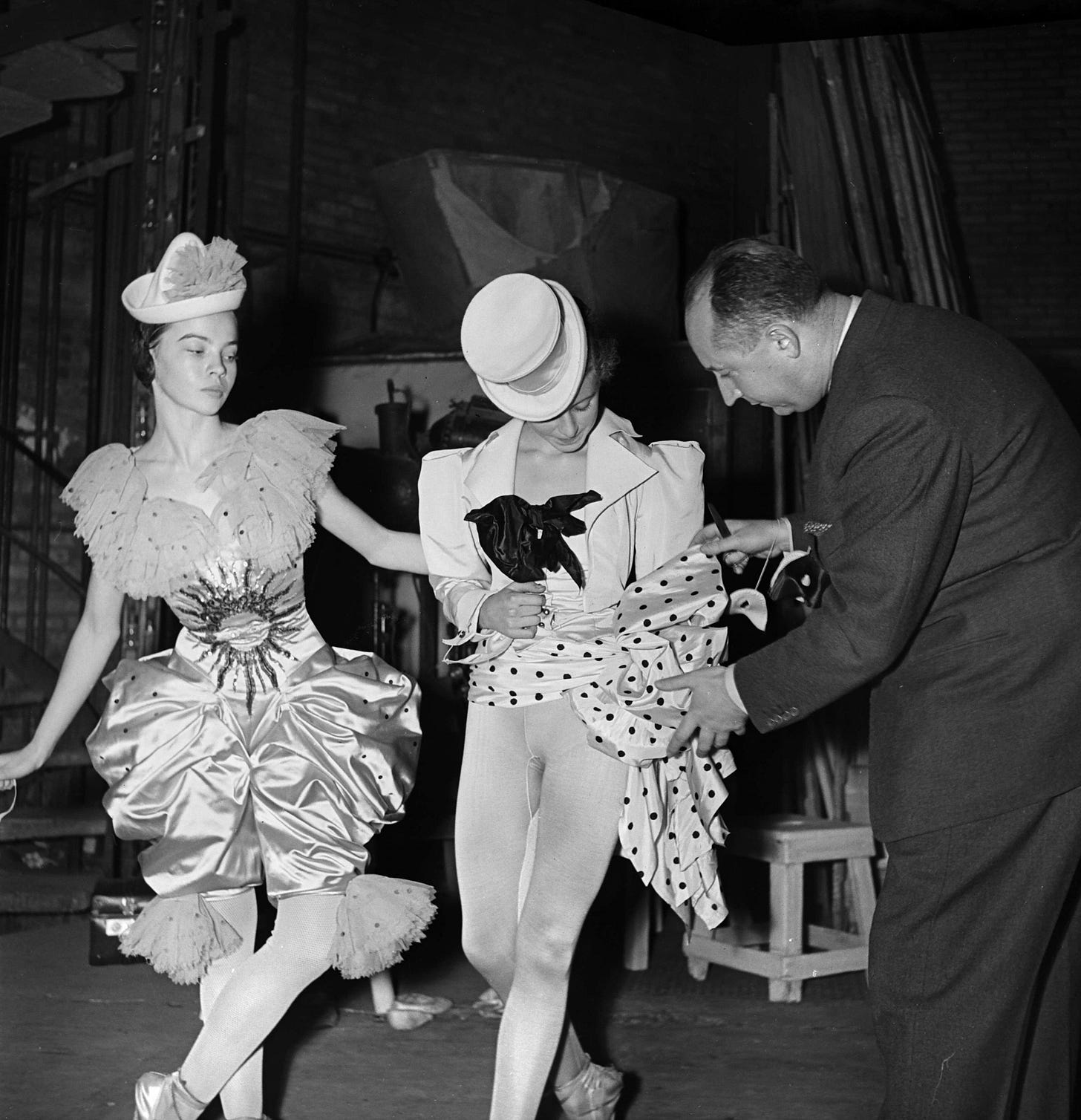
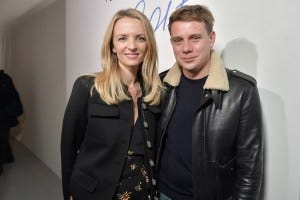


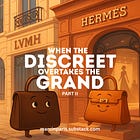



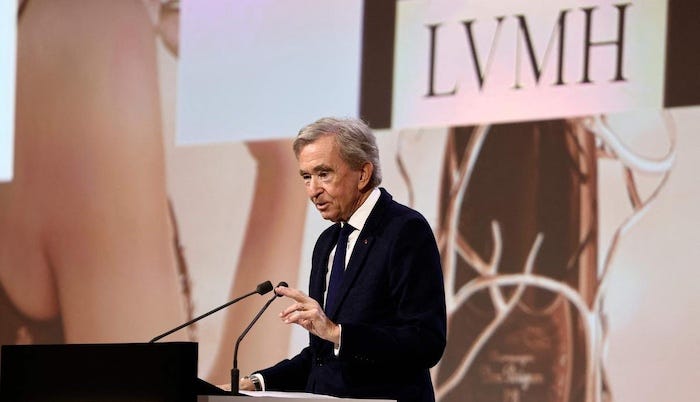


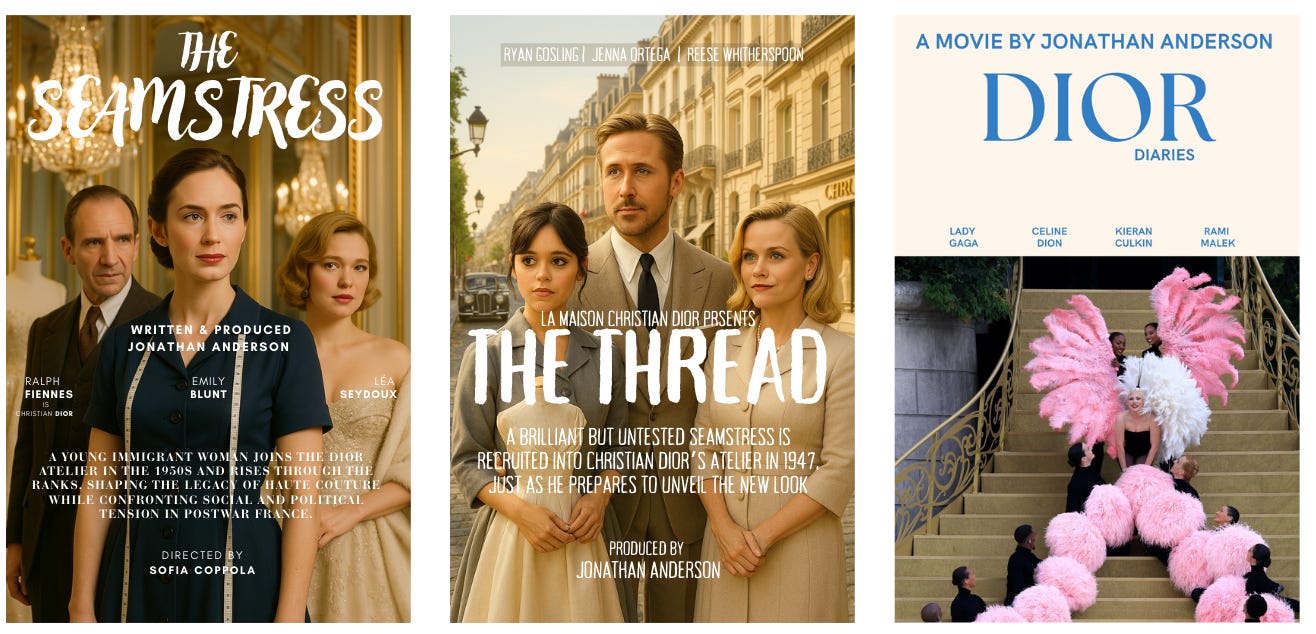


Lovely piece, Monsieur Dior understood that clothing "speaks " to people. A shirt, a pair of trousers, a dress, or a blazer will whisper dreams to its potential owner.